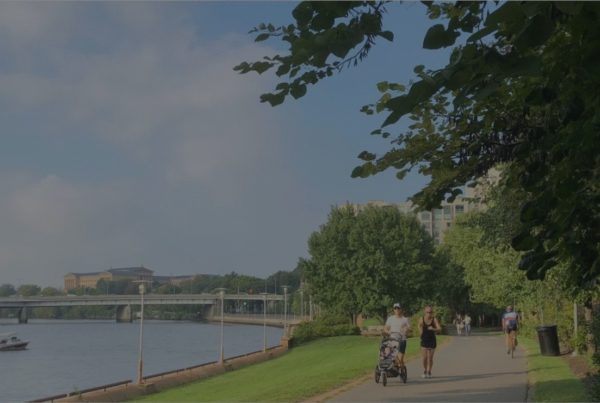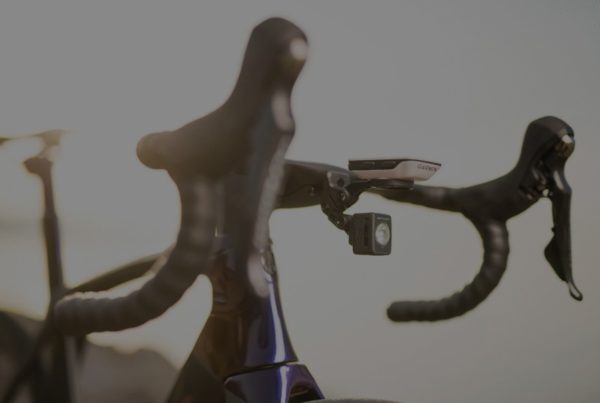If you come to an empty intersection while riding, no vehicles or pedestrians in sight, do you make a complete stop and do a track stand for the audience of passing birds? Slow to a crawl and then stand up to accelerate? Or do you ease up, make sure the intersection is clear, and then roll? Only one of these options is legal — unless you live in Idaho, or a few cities in the U.S. In those select cases, you can legally choose the third option, whereby you treat the stop sign as a yield sign. Idaho passed a law nearly 35 years ago that allows cyclists to treat stop signs as yield signs, and red lights as stop signs.
But since then, Idaho remains the only state to have passed a “Stop as Yield” law. It’s certainly not for lack of trying in other states, though. I’ve lost track of how many efforts have been made to pass a similar law elsewhere, all of which have gone down in flames. The latest effort was in Colorado, where a bill to adopt an Idaho-style Stop as Yield law was recently introduced, but died in the transportation committee after the majority of legislators said the change would cause more problems.
We live in an age when simple knee-jerk takes and emotionally laden sound bite-sized retorts rule the day. Most legislators, law enforcement officers, and even many cyclists just aren’t going to put more than a moment’s thought into this concept before denouncing it.
But you can’t keep a good idea down, and this issue will continue to come up. In fact, a Stop as Yield law has just been introduced in the California Legislature. So I think it’s important to understand what we’re talking about. In most states, cyclists are required to come to a complete stop at stop signs and red lights. But in Idaho, a cyclist is only required to stop at a stop sign when there is approaching cross-traffic that has the right of way. Otherwise, the cyclist is free to enter the intersection (with appropriate caution).
To many opponents of the Idaho law, this sounds like lawlessness and a recipe for disaster. However, the law is exactly in keeping with how a yield sign works — which is why it is called a “Stop as Yield” law. In Idaho, cyclists are still subject to the laws requiring them to observe the traffic signs, just as they are in other states. They aren’t allowed to ignore the signs. They aren’t allowed to cut others off. They’re required to follow the law.
However, the cyclists have a different requirement than motorists.
This is what offends some people — they see it as “special rights” for cyclists. These opponents sometimes argue “same road, same rights, same rules.” But the Idaho law does not authorize cyclists to break the law; it requires them to obey the law. So arguments that cyclists should have to obey the laws miss the point — that’s exactly what Stop as Yield laws require. The issue is that opponents feel that cyclists should have to follow the exact same laws as drivers.
This is not a strong argument. While we don’t want to jeopardize our right to the road, I don’t agree that cyclists must be subject to the exact same requirements as drivers in order to keep our right to the road. How many cyclists who argue “same road, same rights, same rules” would agree that they must be capable of maintaining the same speed as automobile traffic in order to use the road? Zero. And how many drivers get hot under the collar because pedestrians are not required to stop at stop signs unless approaching traffic has the right of way? Again, zero. It’s already well-established in law that different road users are subject to different requirements without affecting their legal right to the road. And nobody gets bent out of shape about it, until we talk about making the laws a little more sensible for cyclists.
So how do we move this forward, from good idea to good law? First, opponents of Stop as Yield have plenty of objections, which we need to anticipate and respond to. But the good news is that the objections are not based on how the law actually works. For example, law enforcement has expressed concerns that a Stop as Yield law would result in more car-on-bike crashes. But that’s simply not true. The evidence from Idaho indicates that there have been fewer and less severe car-on-bike crashes after passage of the Idaho. In fact, Idaho bicycle attorney Kurt Holzer observes:
In my years representing cyclists, I have never seen a car v. bike collision or a bike v. pedestrian collision that was attributable to road users following the stop as yield statute. That’s right, not once in the hundreds of bicycle collision cases I have investigated has the law created an incident.”
Second, focus on why a Stop as Yield law is needed: Because it makes crossing intersections safer for cyclists, and benefits drivers by keeping traffic flowing more smoothly. When cyclists can legally choose Stop as Yield, they can cross an intersection at a safer speed, drivers aren’t forced to wait while cyclists come to a complete stop and then work to get back up to a safe speed, and law enforcement resources can be devoted to more pressing needs. Everybody wins.
Third, engage with the media early on, because the media will be explaining the issue to the constituents of the legislators you are trying to persuade. As an example of what can go wrong, sensational and biased articles played a role in creating opposition to the most recent legislative effort here in Oregon, where attorney Ray Thomas and I testified in support of Stop as Yield at the Transportation Committee hearing on the bill.
And finally, competitive cyclists need to get involved, because it affects us too. Of course, safely rolling a stop is one thing, but rolling the entire paceline through will still be illegal, so it doesn’t solve every problem roadies face at stops, but for solo and small group rides, Stop as Yield helps you to legally cross an intersection in the way that you judge to be the safest, just as we already do countless times when crossing or entering traffic flow from our driveway or the side of the road. But we don’t need to reinvent the wheel; this is as simple as getting involved with our advocacy organizations, and asking them to make a Stop as Yield law a legislative priority for your state. It isn’t a question of if Stop as Yield Laws will be passed, it’s only a matter of when — so let’s make it happen now.
What questions or concerns do you have about Stop as Yield laws? Bob Mionske and BikeLaw.com want to hear from you on the BikeLaw.com Facebook page.
This article, Can’t Keep a Good Idea Down, was originally published on VeloNews on February 24, 2017.
Now read the fine print:
Bob Mionske is a former competitive cyclist who represented the U.S. at the 1988 Olympic Games (where he finished fourth in the road race), the 1992 Olympics, as well as winning the 1990 national championship road race.
After retiring from racing in 1993, he coached the Saturn Professional Cycling team for one year before heading off to law school. Mionske’s practice is now split between personal-injury work, representing professional athletes as an agent and other legal issues facing endurance athletes (traffic violations, contract, criminal charges, intellectual property, etc.).
Mionske is also the author of “Bicycling and the Law,” designed to be the primary resource for cyclists to consult when faced with a legal question. It provides readers with the knowledge to avoid many legal problems in the first place, and informs them of their rights, their responsibilities, and what steps they can take if they do encounter a legal problem. If you have a cycling-related legal question please send it to Bob, and he will answer as many of these questions privately as he can. He will also select a few questions to answer in this column. General bicycle-accident advice can be found at bicyclelaw.com.
Important notice:
The information provided in the “Legally Speaking” column is not legal advice. The information provided on this public website is provided solely for the general interest of the visitors to this website. The information contained in the column applies to general principles of American jurisprudence and may not reflect current legal developments or statutory changes in the various jurisdictions and therefore should not be relied upon or interpreted as legal advice. Understand that reading the information contained in this column does not mean you have established an attorney-client relationship with attorney Bob Mionske. Readers of this column should not act upon any information contained in the website without first seeking the advice of legal counsel.
© Bob Mionske 2017. All Rights Reserved.




